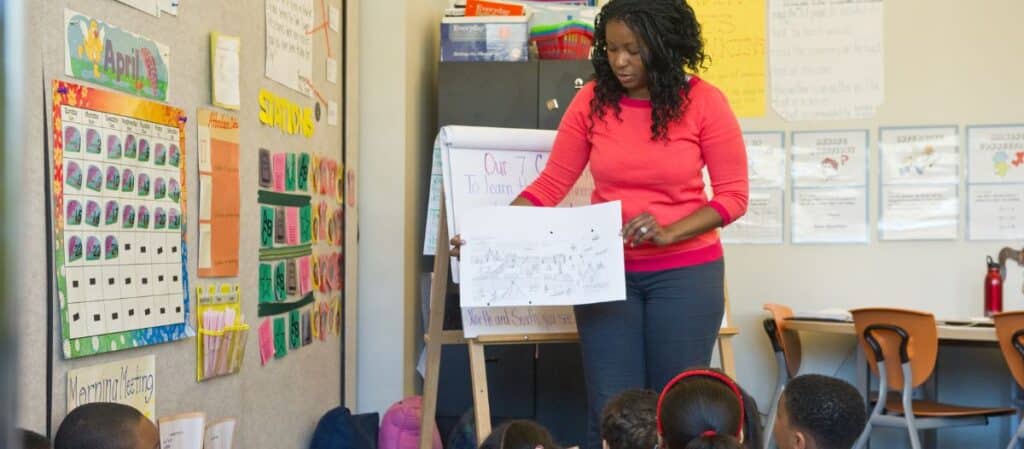
The secret to strong classroom management lies in predictable routines and procedures. From entering and exiting the learning space to managing materials to moments of transition, well-established routines and procedures can provide a natural flow of calmness and order to every part of the day. Giving students clear expectations for these routines and procedures helps them feel safe, independent, and empowered to participate in their classroom.
Interactive Modeling is a specific practice Responsive Classroom educators use to establish classroom routines and procedures. Here are some tips for using Interactive Modeling to create new routines and procedures at the start of a school year:
Taking time to make a list of the most important routines and procedures students need to learn will help you think through your day and maximize student productivity. Along with helping you prioritize which routines and procedures to teach first, this list can help you notice similarities among routines. Students have a lot to learn at the beginning of the year, so helping them find connections among routines will make it easier for them to meet classroom expectations.
To be developmentally responsive to the needs of your students, consider which steps will meet the needs of your age group:
| Elementary | Middle School |
| 1. Say what you will model and why. | 1. Describe what you will model and why. |
| 2. Model the behavior. | 2. Model while students notice. |
| 3. Ask students what they noticed. | 3. Give students the opportunity to collaborate and practice. |
| 4. Invite one or more students to model. | 4. Reinforce their practice with immediate feedback. |
| 5. Again, ask students what they noticed. | |
| 6. Have all students practice. | |
| 7. Provide feedback. |
Your Interactive Modeling plan should be unique to your specific expectations for students. Consider “how to line up” as an example. Some teachers may have students line up in a particular order or stand in specific locations. The exact plan is unique to you and your setting, which requires careful consideration of both how to model routines and how to reinforce expectations. Our planning guides for elementary and middle school can guide you in this process. Plus, once you’ve created them, you will have them for years to come and can fine-tune them based on what you notice works.
Your Interactive Modeling plans will become your best friend throughout the first six weeks of school. Habits take time to form, so you will need to repeat and revisit the Interactive Modeling plan consistently as you notice students taking ownership and following expectations. Here, reinforcing language, which focuses on naming what students are doing well, can solidify students’ actions. You will also need to pay attention to your students developmentally to determine when to revisit these plans, as well as circle back after long weekends, holidays, or when you have a guest teacher.
For educators, it can feel like there just isn’t enough time in the day to get everything done. But proactively preparing students at the beginning of the year will help you maximize time later on. Consider this: if you take five minutes to reteach your class a routine every day, and you have to do that for nine different routines, that adds up to forty-five minutes a day. Across a school year, that amounts to over twenty-two days of instructional time for just nine routines! If you use Interactive Modeling at the beginning of the year, you may spend a little extra time up front, but your class also gains a substantial amount of time back as the year progresses. Your hard work and dedication will give your students the gift of time, which is the best gift of all.
Jenni Lee Groegler Pierson is a contributing author for Empowering Educators: A Comprehensive Guide to Teaching Grades 3, 4, 5 and author of multiple Quick Coaching Guides, includingJoyful Gatherings and Seeing That Students Belong and Are Significant.